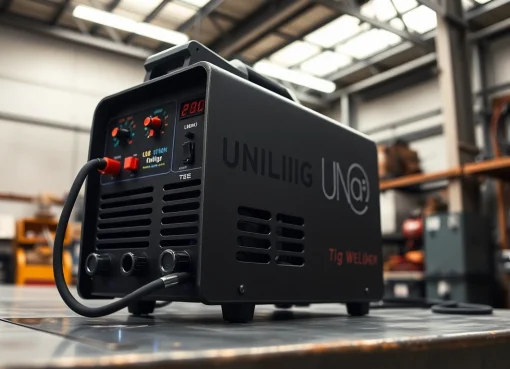How a Propylene Oxide Detector Enhances Safety in Industrial Environments

Understanding Propylene Oxide and Its Risks
What is Propylene Oxide?
Propylene oxide (C3H6O) is a colorless, flammable liquid that serves as a crucial building block in the chemical industry. It is primarily used to produce polyether polyols, which are essential in manufacturing flexible and rigid foams, adhesives, sealants, and coatings. Due to its high reactivity, propylene oxide participates in various chemical reactions, making it a versatile compound in the synthesis of different materials.
Health and Environmental Concerns
While propylene oxide is invaluable in industrial applications, it presents several health and environmental risks. Inhalation of propylene oxide vapors can lead to respiratory issues, dizziness, and headaches. Chronic exposure may result in more severe health consequences, including effects on the nervous system. From an environmental standpoint, its release into the atmosphere can contribute to air pollution and pose risks to aquatic ecosystems, necessitating stringent safety measures.
Industries That Use Propylene Oxide
Propylene oxide is utilized across various sectors, including:
- Automotive: Used in manufacturing foam components and insulation.
- Construction: Integral in producing insulation materials and coatings.
- Textiles: Employed in the production of fibers and finishes.
- Food Industry: Occasionally used as a fumigant, requiring strict adherence to safety regulations.
Importance of Propylene Oxide Detectors
Why You Need a Reliable Detector
Ensuring safety in environments where propylene oxide is present is paramount. A reliable Propylene Oxide detector mitigates potential hazards associated with leaks and exposure. These detectors provide real-time monitoring, allowing for immediate action in case of exposure, significantly reducing the risk of health issues and accidents.
Key Features to Look For
When selecting a propylene oxide detector, several features are essential:
- Sensitivity: The ability to detect low concentrations quickly and accurately.
- Response Time: The speed at which the detector reacts to the presence of propylene oxide.
- Data Logging: Capability to record data for further analysis.
- Portability: Lightweight and easy to transport to various locations within the facility.
- Maintenance Requirements: Ease of calibration and routine checks to ensure continued accuracy.
Regulatory Compliance and Safety Standards
Compliance with OSHA (Occupational Safety and Health Administration) and EPA (Environmental Protection Agency) regulations is crucial for any facility dealing with hazardous materials. Understanding permissible exposure limits and ensuring that propylene oxide detectors meet these standards can help avoid legal repercussions and ensure a safer work environment. Regular audits and adherence to these regulations can significantly improve workplace safety.
How to Choose the Right Propylene Oxide Detector
Evaluating Product Specifications
Choosing the right detector goes beyond mere brand comparison; it involves a thorough evaluation of product specifications. Key specifications to consider include:
- Detection Range: Ensure the detector can monitor the appropriate ranges specific to your work environment.
- Calibration Frequency: Investigate how often the device needs recalibration to maintain accuracy.
- Technology Used: Review whether the detector uses electrochemical, infrared, or other detection methods suitable for your application.
Comparing Leading Brands
With many brands on the market, it’s essential to compare their offerings effectively. Research online reviews, case studies, and customer feedback to gauge performance and reliability. Popular brands often offer competitive warranties and robust customer support, which can be incredibly beneficial if issues arise post-purchase.
Cost Considerations and Budgeting
While budget constraints are a reality for many businesses, investing in a quality propylene oxide detector should not be overlooked. Consider not only the upfront cost but also the total cost of ownership, which includes maintenance, calibration, and potential downtimes due to faulty equipment. Making a detailed budget that accounts for these factors can help in securing a detector that provides long-term safety and reliability.
Implementing and Maintaining Your Detector
Installation Best Practices
Proper installation of the propylene oxide detector is critical to ensure its functionality. Follow these best practices:
- Select the Right Location: Position the detector near potential leak sources while avoiding areas of interference, such as direct sunlight or high air flow.
- Secure Mounting: Ensure the device is mounted securely to prevent movement or accidental damage.
- Follow Manufacturer Instructions: Adhere to specific installation guidelines provided by the manufacturer.
Routine Maintenance Tips
To ensure optimal performance of your detectors:
- Regular Calibration: Follow a strict calibration schedule to maintain accuracy.
- Visual Inspections: Conduct frequent visual checks for signs of wear, damage, or dirt accumulation.
- Battery Checks: Regularly inspect battery life and replace batteries as needed to avoid detector failure.
Responding to Alarm Conditions
In the event of an alarm condition, having a clear response protocol is vital. Steps include:
- Evacuate the Area: Ensure all personnel leave the vicinity immediately.
- Identify the Source: If safe to do so, ascertain the source of the leak and take necessary actions to mitigate it.
- Notify Emergency Services: Advise local emergency services if the situation escalates or if there are injuries.
Monitoring and Reporting with Propylene Oxide Detectors
Data Logging and User Reports
Advanced propylene oxide detectors come equipped with data logging capabilities that provide insights into exposure levels over time. Utilizing this data can help identify patterns that may indicate leaks, allowing for proactive measures to be taken. Regular reporting simplifies compliance with safety regulations and provides documentation for audits.
Integrating with Safety Management Systems
Integrating your propylene oxide detection system with broader safety management systems enhances overall workplace safety. This can involve linking detectors with alarm systems, training modules, and emergency response protocols, allowing for streamlined operations and improved safety outcomes.
Analyzing Performance Metrics Over Time
Tracking the performance of your propylene oxide detectors involves evaluating key metrics such as:
- Detection Frequency: How often do detectors trigger alarms?
- Response Times: Average time taken to initiate a response during an incident.
- Maintenance Costs: Financial implications of maintaining the detection system over time.
Analyzing these metrics can help in making data-driven decisions regarding upgrading equipment or modifying safety protocols.



Leave a Comment